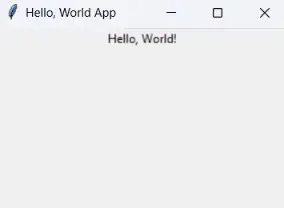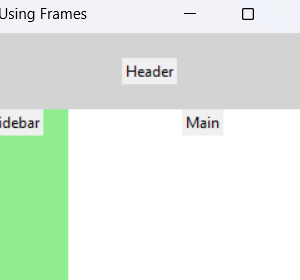Tkinter Ttk Widgets
Hey there!
So, you probably know that Tkinter has been around forever—we’re talking since 1991.
It’s like the grandparent of Python GUIs.
And yeah, it’s cool, but sometimes you just want something that feels a bit more modern and polished, right?
Or maybe you’re even in the mood for a dark mode vibe—because who doesn’t love that sleek look?
Well, I’ve got you covered.
Today, we’re diving into Ttk widgets and CustomTkinter—two amazing ways to level up your Python GUIs.
And by the way, if you’re curious about how to get the most out of CustomTkinter, we’ve got a whole series on that, so don’t forget to check it out. 😉
Tkinter Ttk Widgets
Contents
Tkinter Ttk Widgets
What’s the Deal With Ttk Widgets Anyway?
Alright, so Ttk widgets (short for Tk themed widgets) came out in 2007 with Tk 8.5.
Basically, they were introduced to give your apps a more polished, native look that actually blends in with whatever operating system you’re using—Windows, Mac, Linux, you name it.
Classic Widgets vs. Ttk Widgets
- Classic Widgets: Old-school, plain-looking, and super basic. They’ve been here since 1991!
- Ttk Widgets: Themed, fresher-looking widgets designed to fit right in with your OS. Think of them as Tkinter’s makeover edition.
Tkinter Ttk Widgets
Why Should You Bother With Ttk Widgets?
📂 Organized Code: Ttk uses a styling system that separates how things work from how they look. Nice and tidy!
🌟 They Look Better: Seriously, they just look cleaner and more professional.
⚙️ Better Functionality: Handling states like active, disabled, and focused is way easier.
How to Import Ttk Widgets (It’s Super Simple)
Here’s the deal—if you want to use Ttk widgets, you just have to import them like this:
import tkinter as tk
from tkinter import ttkEasy, right?
This gets you both the classic tk widgets and the shiny ttk ones.
Ttk Button vs. Classic Button(Quick Example)
Tkinter Ttk Widgets
Check this out:
import tkinter as tk
from tkinter import ttk
root = tk.Tk()
# Classic Button
tk.Button(root, text='Classic Button').pack()
# Ttk Button
ttk.Button(root, text='Themed Button').pack()
root.mainloop()Output:

They might look similar at first, but the ttk label actually adapts better to your operating system’s theme.
It’s all about those subtle but classy differences. ✨
Tkinter Ttk Widgets
So, What’s Great About Ttk Widgets?
Easier to Manage States: Handling things like disabled buttons is just smoother.
They fit in: Your app looks like it belongs on whatever platform you’re running.
Works seamlessly with tk so that you don’t need to worry about performance.
So no real loss!
Commonly Used Ttk Widgets
Here’s a quick rundown of the most common ones:
| Classic Widget | Ttk Widget |
|---|---|
Button | ttk.Button |
Checkbutton | ttk.Checkbutton |
Entry | ttk.Entry |
Frame | ttk.Frame |
Label | ttk.Label |
Radiobutton | ttk.Radiobutton |
Scrollbar | ttk.Scrollbar |
And some cool new ones you only get with ttk:
Treeview
Combobox
Notebook
Progressbar
But Wait… Have You Heard of CustomTkinter?
Now, if you’re like me and want your apps to look super modern—you know, sleek buttons, sliders, dark mode, and all that—then you’ve got to check out CustomTkinter. It’s like Tkinter’s cool, stylish cousin. 😎
Why CustomTkinter Rocks
- 🌑 Dark Mode Support: Right out of the box!
- 🎨 Modern Designs: Rounded buttons, sliders, switches—you name it.
- 🔥 Easy Customization: Pick your colors, fonts, and themes, and make your app look exactly the way you want.
Comparing Classic Tkinter, Ttk, and CustomTkinter
| Feature | Classic Tkinter | Ttk Widgets | CustomTkinter |
|---|---|---|---|
| Appearance | Basic | Native Look | Modern Stylish |
| Dark Mode Support | No | No | Yes |
| Customization Options | Low | Moderate | High |
| Performance | Fast | Fast | Moderate |
And That’s all I’ll see you in the next one.
Till then happy coding!!

